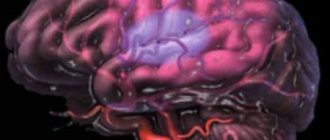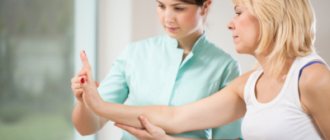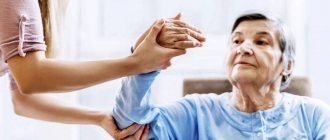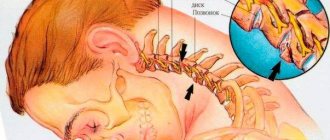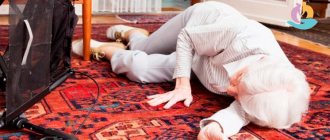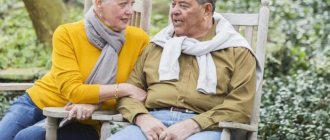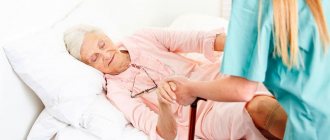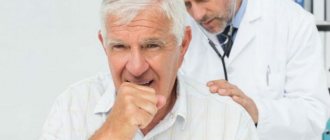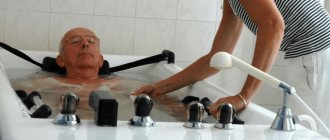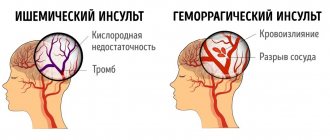Declaration of incompetence after a stroke may be based on Articles 281-286 of the Code of Civil Procedure of the Russian Federation. But to prove the need for deprivation of legal capacity, it is necessary to present significant evidence. An elderly person after a stroke often needs care, as he has difficulty moving, however, he can remain mentally healthy. Speech can be uncoordinated and unintelligible, but a person of sound mind cannot be deprived of legal capacity. The plaintiff must provide evidence in addition to the application and his desire.
How long does it take to recover?
Recovery after a stroke can take either six months or a couple of months. It all depends on the gender and age of the patient, the degree of damage to brain cells, the type of stroke, and the speed of medical care. And often with a hemorrhagic stroke, patients suffer especially severely, since doctors do not have time to stop the bleeding in time, and this leads to cerebral edema or coma. On average, a person under 30-45 years old takes about a month to recover from an illness, but only with the help of doctors and following all recommendations.
Ischemic stroke with mild consequences
In this case, we may be talking about partial loss of vision, numbness of the limbs, loss of sensitivity, and speech disorders. For this purpose, medications, massages and special speech exercises are used. Therefore, recovery will take about one to two months, and then the capabilities will return completely.
Any type of stroke with significant consequences
The most significant effects of a stroke are loss of memory and speech, paralysis, mental health problems, leg problems (spinal stroke), and inability to distinguish colors or see. Then recovery will take at least three to five months, which requires not only taking medications, but also the help of neurologists, psychologists, massage therapists and physiotherapists.
Severe ischemic and hemorrhagic strokes with persistent consequences
The most severe examples of consequences from an ischemic or hemorrhagic stroke are complete loss of the ability to walk, tissue necrosis, complete loss of the ability to speak or write, see, partial memory loss, swelling of the legs and arms, coma or swelling of the brain. At the same time, time is not in the patient’s favor, especially in cases of coma, since nerve cells are affected more deeply. In such situations, rehabilitation takes at least six months, and capabilities may not be fully restored.
Catering
When caring for people affected by a stroke at home, much attention is paid to nutrition and the digestive process.
The menu should not be the same; it should include antioxidants, essential minerals, and vitamins. In addition to the benefits, the wishes of the victim must be taken into account. Favorite dishes will brighten up difficult days after illness.
The basic principles of nutrition are:
- Limiting baked goods, animal fats, smoked and spicy foods on the menu.
- Refusal of alcoholic drinks.
- Inclusion of lean fish, meat, dairy products, cereals, berries, vegetables.
- All dishes must be boiled, stewed, steamed.
- If swallowing and chewing are impaired, food is served in liquid form or puree.
- In the absence of contraindications, it is recommended to drink up to 2 liters of water per day.
For reference. It is advisable for the person to sit while feeding. At the same time, pillows are placed around for support.
Rehabilitation after a second stroke
The main restoration of all functions that were present in the patient before the repeated vascular accident occurs in the first two to three months - they are considered peak for neurological recovery. At this time, half of the main functions are restored, then until the end of the year - the second half. Assessment of the quality of recovery includes indicators characterizing the return of self-care skills, motor and cognitive functions.
Often, a consequence of a second stroke is a disorder of motor functions, so the activation of a post-stroke patient begins in the hospital as soon as his condition has stabilized. Basically, the ability to move in paralyzed limbs is restored in the first six months.
To prevent muscle contracture in the joints of paralyzed limbs, the patient, who is still on bed rest, begins to be activated - to do static exercises, i.e. give the arms and legs positions that the patient himself is not yet able to assume. For example, they extend the arm at the elbow joint, placing it on a chair placed next to the bed, while opening the hand and extending the fingers as much as possible. The leg is bent at the knee joint at an acute angle, the foot is flexed. The limbs are fixed in the desired position using bolsters, pillows, towels, and sandbags for at least two hours every day.
Additionally, passive gymnastics is performed with paralyzed limbs. First, the exercises are performed by a physical therapy specialist. At the same time, the patient’s relatives are present, who, having studied the sequence of exercises, will continue to do them independently after discharge. Passive gymnastics is complemented by breathing exercises. The pace and number of exercises performed gradually increases.
Physical recovery of a post-stroke patient begins with giving him a semi-sitting position under the supervision of medical staff, measuring pulse and blood pressure, and assessing the subjective sensations of the patient, who gradually learns to sit, then stand and move with support around the ward. The patient is supported on the paralyzed side, placing the shoulder under the paretic limb. Next, the patient begins to use the support of special devices - walkers. At the same time, they are restoring everyday skills - they offer to grasp objects with a paralyzed hand, dress without assistance, button up, tie shoelaces, and the like.
In addition to physical therapy, the patient is prescribed massage. It should be performed by a specialist familiar with the specifics of performing this procedure for post-stroke patients, since lack of qualifications can lead to complications after massage in the form of muscle spasms and contractures. In case of severe muscle spasms, the patient is prescribed muscle relaxants, the treatment regimen for which is prescribed by the doctor in each specific case. Acupressure, physiotherapeutic procedures, and acupuncture prevent the occurrence of movement restrictions in the joint.
A special activating massage is also used for decreased muscle tone in paralyzed arms and legs; drugs that activate muscle contractions and physical methods are prescribed.
If relatives have the opportunity to place a post-stroke patient in a specialized rehabilitation center, then qualified specialists there will quickly restore all functions that need to be restored.
Speech disorders are most effectively corrected through systematic sessions with a speech therapist-aphasiologist. At first, these classes are short in time, no more than a quarter of an hour. Over time, loved ones can actively take part in restoring speech, writing, and reading skills by working with the patient at home. Typically, the patient is prescribed nootropics that help restore speech and other cognitive functions.
The diet must contain plant foods, cereals, cereals, lean meat and fish. Fatty, fried foods, smoked foods, pickles, cakes, pastries, and pastries should be excluded. The dishes are under-salted. The daily calorie intake should be 2000-2500 kcal. Food is taken in small portions, 5-6 times a day.
How to care for a person who is bedridden or able to move after an attack?
As already described above, it is mainly relatives who care for the patient after a stroke . They should be patient.
Household organization
- For a bedridden patient, it is advisable to allocate a separate room; it should be bright and spacious.
It is good if there are blinds on the windows, and if the patient wishes, the room can be darkened. At the same time that the room should be protected from extraneous sounds, the patient should not feel isolated. Everything you need needs to be placed at hand. - The bedside rug should not slip, so you can use bathroom rugs with a rubberized bottom.
- There must be a bedside table at the patient's bedside where a telephone or other means of communication should be located. At the request of the patient, a TV can be installed in the room.
- Rooms need to be ventilated twice a day in any weather, wet cleaning should be carried out daily - bedridden patients are very sensitive to dust.
- Position in bed - options and rules for placing the patient.
- After a stroke, muscle tone on the paralyzed side increases, and a stable position can gradually form - a bent arm at the elbow and hand, a bent leg. Therefore, the patient’s position must be changed every 2-3 hours, and at the same time ensure that the arms and legs are moved to the side, bent and unbent.
- The patient can lie on the paralyzed side; this is not contraindicated, but again the position of the patient’s arms and legs must be constantly changed.
- It is undesirable for a patient to lie on his back for a long time, since this position contributes to the development of even stronger muscle tone and increases the risk of bedsores.
When the patient’s general condition improves and blood pressure levels stabilize, the patient should be taught to independently change position in bed. - You need to put the patient in bed as early as possible, but before that, of course, you need to consult a doctor.
How to change bed linen?
- To change bed linen, the patient is turned on his side, after which the freed part of the dirty sheet is rolled up and pushed under the patient's side.
- Then, a clean sheet rolled into a roll is rolled out on the bed to the patient’s body.
- After this, the patient needs to be turned onto the other side, pick up the dirty sheet and roll out a clean one until the end.
Important! It is better to carry out this procedure together - one changes the underwear, the other holds the patient so that he does not fall out of bed.
Stool control
At the first request of the patient, he must be seated on the toilet next to the bed or a bed should be placed under him.
You must understand that it is easier for a person to relieve himself while sitting, so it is better to seat the patient on a toilet chair. Bowel movements should occur once every 1-2 days. To prevent constipation, you need to properly organize the patient’s diet.
Washing and Washing
You need to wash the patient and brush his teeth every day. To do this, you need to use a small bowl of water and a sponge. Washing the intimate area should be done after each diaper change - this way you can prevent the appearance of diaper rash and irritation on the skin of the perineum.
Be sure to lubricate the skin of the perineum with baby cream and treat it with powder. Once every 5 days the patient needs to be completely bathed. If it is not possible to bathe him in the bathroom, his body should be wiped with a damp sponge every three days.
Feeding
The patient should be fed from a spoon, having first given him a sitting position. If you have a bed with a raised headboard, this is not difficult to do. If the patient's bed is ordinary, the patient's head and upper body are raised with the help of pillows. It is important to check with your doctor to see if there are any contraindications to sitting.
Changing clothes
To make it easier to care for a bedridden patient, it is better not to use clothes at all, but to wear only a diaper. But quite often patients experience discomfort from this and are asked to put on clothes. It is more convenient to change the patient's clothes in a sitting position or at least half-sitting. It is better to put a loose T-shirt on the patient - it is easier to take off and put on.
Medical principles
The patient's relatives must very carefully follow all the doctor's instructions - measure blood pressure and temperature daily, and give the necessary medications.
Important! If there is a persistent increase in blood pressure, it is necessary to use medications to keep it within limits not exceeding 140/90.
Preventing bedsores
Under no circumstances should pressure sores be allowed to occur! To reduce the risk of bedsores, it is recommended:
- Change the patient's position every 2 hours during the day and every 3-4 hours at night.
- When changing the position of the patient's body, one must avoid sliding - then tissue shift will not occur. The patient should be lifted, not pulled.
- Examine the patient’s skin every day and carry out the necessary hygienic measures.
- Places that are most susceptible to the formation of bedsores should be treated with tonics - special lotions, camphor alcohol.
- Carry out a massage - rub the areas prone to the formation of bedsores with a towel or terry mitten (there are some special features for performing a massage on the left and right sides, as well as on the arms and legs after a stroke).
- Use anti-decubitus mattresses.
- Avoid wrinkles in bed linen.
- Avoid excessive drying and over-hydration of the skin.
Prevention of thrombosis development
Thrombosis develops as a result of a stationary body position. Therefore, as soon as the attending physician gives permission, it is necessary for the patient to begin performing special gymnastics.
Proper nutrition
The patient should eat in small portions, but often. This way the load on the body will be less, and the digestion processes will be restored faster. In the first days after a stroke, the caloric content of food should be minimal, and then, with the permission of the doctor, more high-calorie foods can be introduced into the diet. The consistency of the dishes should be porridge or puree, then the food will be digested better and there will be no problems with constipation.
This video will tell you how to eat properly after a stroke:
Restoration activities
Many physical, speech and behavioral changes in the brain are reversible; the main thing is not to waste time and begin to restore them as soon as possible.
Physiotherapy
As soon as the patient regains consciousness after a stroke, passive gymnastics should immediately begin - light stroking and gentle rubbing and kneading of the muscles.
A more active set of exercises can be practiced with the permission of a doctor ; it is advisable that the exercises be selected by an experienced and qualified specialist.
The full range of exercises necessary for a patient who has suffered a stroke is clearly demonstrated in this video:
Psychological component
This is a very important aspect of the patient’s recovery. It is very important for him to know that his loved ones support him, that they need him, and that everyone is waiting for his recovery. The more positive emotions, the higher the treatment result.
What kind of assistance should be provided to those who are not bedridden?
A stroke does not always leave a patient bedridden. If a patient is able to move after a stroke, this greatly simplifies his care and also significantly reduces the likelihood of complications.
However, he will still need help:
- in blood pressure control;
- in movement and everyday life;
- in the restoration of speech and memory;
- psychological support.
How can you increase your life expectancy?
The most important thing, if a stroke does occur, is to recognize its symptoms in time. The easiest way to do this is to remember the “IMPACT” rule:
- “U”, the smile is asymmetrical, one corner of the mouth is downturned;
- “D”, movement – inability to raise and hold both arms at the same time;
- “A”, articulation – speech is confused, slurred, tongue-tied;
- “R”, solution - if at least one of the signs is present, call an ambulance.
Later, you can increase your life expectancy by changing your lifestyle:
- reviewing nutrition. They try to completely exclude fried, pickled, smoked, canned, confectionery, and baked goods from the diet. Limit salt, sources of saturated fats (lard, butter, coconut, palm oil, red meat, cheese, cottage cheese);
- giving up cigarettes;
- by reducing or better eliminating the consumption of alcoholic beverages;
- making your life more active.
Following the doctor’s recommendations, active rehabilitation exercises, and a positive attitude also help reduce the risk of complications and recurrence after a stroke.
Relapse Prevention
A stroke survivor has a significantly increased likelihood of developing another stroke. To avoid the risk of a repeat incident, high-quality care, physical activity, compliance with the recommendations of the attending physician, massage, the use of physiotherapy methods, and visits to specialists will help.
For reference. Blood pressure and pulse are checked twice a day. If normal levels increase, seek help from a doctor.
An important role is played by the patient’s psychological comfort, absence of stress, heavy loads, and optimism.
In any situation, a stroke survivor must give up bad habits and follow the principles of a healthy diet.
Consequences of an attack
A brain stroke invariably leads to negative consequences. In principle, there is no difference between the consequences of a stroke in women and those in men. The consequences of stroke in men can be observed more often only for the reason that this pathology develops more often in males. The most dangerous complication of a stroke is a recurrent attack.
The consequences of the attack begin to appear from the first minutes of the attack. The patient experiences the following symptoms, which clearly indicate the development of a cerebral stroke:
- Increased pressure.
- Increased body temperature.
- Slow reaction.
- Cramps.
- Sharp headache.
- Loss of sensation in one side of the body.
- Loss of orientation.
- Memory loss.
- Speech impairment.
- Coma.
After the attack has stopped, the patient may experience the following abnormalities:
Paralysis. The most common consequence of a stroke is paralysis of one side of the body. Paralysis develops on the side opposite to the localization of the pathology. With this disorder, the patient can no longer cope without outside help. He needs serious rehabilitation, which can last several years. Basic motor functions should be restored within a year, fine motor skills take much longer to recover.
Loss of sensation. This deviation is characterized by a loss of sensitivity in the muscles of the body. Recovery should be accompanied by exercises to return motor activity.
Speech disorders. Restoration of speech skills depends on the specific disorder. Speech problems occur in about a third of stroke patients. A person may experience the following speech problems:
- Impaired speech understanding.
- Impairment of one's own speech.
- Difficulty finding words.
- Violation of both understanding and speech reproduction.
- Complete impairment of speech perception and reproduction.
Restoration of speech functions should begin as early as possible. For this purpose, the patient is recommended to have special sessions with a speech therapist. The recovery time is quite long. As a rule, speech is restored after several years.
In addition to these consequences, the patient may encounter complications such as:
- Hypotonicity of muscles.
- Central pain syndrome.
- Trophic pathologies.
- Vision pathologies.
- Difficulty swallowing.
- Nervous system disorders.
- Loss of coordination.
- Epilepsy.
All these disorders require long-term treatment. Often the care of patients falls on the shoulders of relatives, and it is they who must monitor the implementation of all the doctor’s recommendations. How long people live after a stroke largely depends on the care of their relatives. The main task of relatives and doctors is to prevent a recurrent attack and rehabilitation of the patient, which should begin as early as possible.
Consequences of a stroke
Cerebral circulation disorders often lead to serious consequences. Among them are motor dysfunctions. A person loses the ability to move independently, cannot hold objects in his hands or take them.
Paresis and paralysis are observed. When it is possible to make movements, it is often discovered that it is impossible to coordinate them and maintain balance. This happens when walking, trying to sit down, or changing body position.
Sensitivity disorders are noted. The victim loses the ability to feel pain and temperature changes. There is a feeling of numbness, burning, crawling. The limbs become as if they were made of cotton.
In difficult cases, a disorder of spatial and temporal orientation is possible.
With damage to the cerebral hemispheres or an extensive stroke, memory deterioration, loss of the ability to perform logical operations, and a decrease in cognitive abilities are noted.
For reference. Circulatory disorders affecting the speech centers lead to loss of speech functions, loss of the ability to express one’s thoughts, choose the right words, construct phrases, and understand spoken speech and written words.
A stroke often leads to a deterioration in psycho-emotional state. Depression, apathy, and lack of self-confidence develop. Many become aggressive, hot-tempered, and capricious.
The speed and limits of a patient’s recovery after a stroke
Often close people responsible for rehabilitation really want to hear clear deadlines: how long will it take for the patient to recover to a certain level?
Of course, this question is naive and is mainly dictated by the great stress that people experience. Clear deadlines seem to them like a lifeline that they can grab onto in such a situation that unexpectedly falls on their shoulders.
No doctor can answer this question. The timing is so individual that sometimes it is impossible to say until the last minute whether a person has approached the possible limit of recovery. Or there is still a long difficult work ahead.
However, a large sample of medical histories makes it possible to statistically compile estimates of average recovery rates. The type of stroke and the resulting damage (lost capabilities) of the patient are taken as a guideline.
- In case of ischemic stroke, as a result of which the consequences can be attributed to very mild, minimal, expressed in minor impairments of neurological functions (for example, mild tremor of the limbs, slight paralysis of some muscles, mild visual impairment), the expected time frame for the first visible results after one month is indicated treatment, and full recovery can be expected within three to four months.
- In any stroke, as a result of which the patient receives severe damage in terms of neurology, for example, paralysis of some muscles or limbs, loss of coordination in a pronounced form, and others, this implies the possibility of a very moderate, partial restoration of some functions. It is possible to restore the patient to self-care, but full recovery should not be expected. This happens, but these cases are very rare and unpredictable.
- Severe strokes of any kind do not imply full recovery. The patient usually receives complete paralysis of one part of the body (left or right). On average, it takes about two years for the patient to learn to sit again, perhaps to develop some paralyzed limbs, but complete recovery is not possible.
This table is not the ultimate truth, but it allows us to roughly estimate the scale of the disaster. It should be separately noted: you can hope for the best, but prepare yourself for the worst, then, regardless of the results, neither the patient nor his loved ones will experience deep depression about the unattained result. Which, unfortunately, is not uncommon with such serious and unexpected illnesses.
Often patients are so disappointed in the results that conventional therapy gives that they begin to resort to various not very scientific methods. Is it possible to refuse those methods offered by conventional doctors? It is reliably known that, for example, recovery after a stroke using folk remedies without the use of modern medications sometimes occurs in practice.
In fact, the stated recovery periods are wrong. Once people have suffered a stroke, they are forced to engage in rehabilitation for life, which is very difficult.
Preventing bedsores
For reference. One of the common complications that a bedridden person faces after a stroke is bedsores. These are areas of soft tissue necrosis that occur in areas of increased pressure during a prolonged immobile position of the body.
The main reason is insufficient blood supply. It is believed that for a bedsore to occur, it is enough for the blood flow to be disrupted for just two hours.
Bedsores occur on the sacrum, coccyx, heels, shoulder blades, knees, elbows, back of the head, and outer thighs.
Attention! The consequences of even small wounds are sepsis, blood poisoning, death.
To prevent bedsores, rubber circles are used. They are placed under those areas of the body that experience the greatest pressure.
It is recommended to change the position of a stroke victim every two hours. Massages are provided regularly and accessible physical exercises are performed.
Every day the patient's body is checked for pressure sores. Twice a day, the areas where damage appears are washed. The skin is treated with alcohol solutions and talc.
Bed linen should be changed regularly. After each meal and movement of the patient, folds are smoothed out and crumbs are removed.
Restoring speech in older people after a stroke
The most intensive restoration of speech functions in elderly people is observed in the first 6 months after a stroke; in the case of extensive lesions or late treatment, it can last 2–3 years.
Depending on which areas of the brain were affected by the stroke, patients experience a motor or sensory form of speech impairment (aphasia). With the motor type, the patient:
- perceives speech by ear;
- understands what is being said to him;
- responds to requests;
- cannot formulate thoughts and pronounce phrases;
- does not want to read and write, as these processes are difficult for him.
With sensory aphasia, the patient does not perceive the words of others, he himself speaks incoherently, without controlling the speech flow. Such a patient can read, but will not understand the meaning of sentences; writing skills are completely lost. The speech of older people after a stroke is not meaningful enough and is accompanied by gestures. Patients try to explain what they want to say to others, but they do not understand them, and as a result they become irritated and offended.
In this case, you need to understand that even long exercises to restore speech after a stroke (lasting several months or even years) may not give a positive effect. In 30–35% of cases, speech functions return spontaneously and not gradually.
In order for older people to start speaking after a stroke, they need to constantly hear sounds, words, and expanded speech.
During rehabilitation, it is necessary to follow the principle of the sequence of stages. You can start classes by practicing the pronunciation of individual sounds, then you can move on to syllables, simple and complex words, and then to small poems and sentences. When working with older people after a stroke, you can help them a little - pronounce the initial part of the word, and they will finish the ending themselves.
Also, to restore speech, older people are recommended to listen to music and sing. Often, patients after a stroke cannot speak normally, but retain the ability to sing. In this case, you should definitely try to sing - this will activate speech restoration.
Exercises to rehabilitate facial muscles are best done in front of a mirror. Such classes are especially indicated in cases where an elderly person has a distorted face after a stroke. To do this you need to do the following:
- bare teeth;
- curl and protrude your lips into a “tube”;
- opening your mouth, push your tongue forward as much as possible;
- alternately bite your upper and lower lips;
- lick your lips with your tongue in a circle, first in one direction, then in the other direction;
- pull the corners of your mouth up, as if smiling.
During speech rehabilitation classes with older people, you can use the following:
- showing the patient cards on which letters, syllables and words are written, asking him to compose a sentence from them and read it;
- encourage the patient to communicate: ask questions, sing together, recite poetry;
- listen to your favorite audiobooks with the patient and retell their contents;
- look at the pictures and then ask them to describe them.
If relatives conduct classes with a patient who has suffered a stroke at home, it is important to be kind to even the slightest attempts by the patient to pronounce words, to encourage him, and not to correct mistakes. To help older people overcome their speech impediment, you need to be persistent and constantly communicate with them.
Advice for relatives
The most difficult period is considered the first week, when loved ones are left alone with the patient for the first time. Most people experience despair and self-doubt. It takes a week or a month to give all your strength, forgetting about your own needs. But post-stroke rehabilitation of severe patients takes a long time: from several months to 2-3 years.
To provide care for a patient after a brain stroke, you will have to spend a considerable amount of effort and financial resources. The following rules will help you avoid emotional burnout:
- Believe in success, be prepared for a long recovery, slow progress.
- Rejoice in the achievements of a loved one, even the most modest ones. With small steps you can achieve big goals.
- Don't doubt yourself. You will have to learn to do various unusual manipulations. In the first stages of learning, failures are inevitable. Over time, you will begin to successfully cope with your responsibilities.
- Leave time for yourself. Pay attention to your personal needs every day. Try to entrust your care to another person at least 1-2 times a week: a relative, friends, or a caregiver.
- Find out about the presence of volunteer, charitable organizations, and church communities. They can periodically take on caregiving responsibilities, help financially, and provide psychological support.
- Learn to fully relax and deal with stress. This will allow you to restore your strength more efficiently, without wasting it on worries.
- Find offline/online communities of people who also care for bedridden patients. Here you can exchange experiences and get advice.
- Be sure to “reset” negative emotions. For example, share your fears, worries, thoughts with friends, relatives, visit a psychologist. Accumulated negative feelings are debilitating. Over time, you will take them out on the patient.
Principles of recovery
Despite the fact that the rehabilitation course is developed individually and depends on the gender, age of the patient and the degree of brain damage, there are principles and general rules that are present in any program. We are talking about the characteristics of treatment, types of consequences, number of methods and techniques for recovery, factors slowing down or accelerating the process. By following the recommendations, adhering to a daily routine, taking medications and regularly doing exercises, you can achieve positive dynamics within two months.
Side effects of stroke
After a stroke, a patient may encounter a number of disorders that relate to speech, emotional state, mental state, and physical capabilities. This is about:
- paralysis and numbness of the limbs
- paresis, loss of sensitivity
- loss of vision, speech and memory
- problems with orientation in space and time, coordination of movements
- fine motor disorders
- mental and emotional disorders
- cerebral edema, coma and disability
All this awaits the patient if the brain cells are damaged deeply and in large quantities. Much in this matter depends on the speed of medical care, the gender of the patient, the presence of hemorrhage and the type of stroke.
Basic principles
The recovery course is carried out in compliance with such principles as duration, complexity, adequacy and systematicity. The process usually takes at least three months and can last up to a year. It involves performing several procedures at once, affects all functional systems of the body and requires constant exercise.
At the same time, it is important not to overdo it, not to overload the patient and not to demand greater results at the beginning of treatment. Despite pain, lack of response, complications and depression, it is necessary to continue recovery and follow the rules
Factors that hinder or slow down recovery
The recovery and treatment of a stroke can be complicated by the presence of chronic diseases, vascular pathologies, the patient’s advanced age, lack of rest, inappropriate medications, and deep-seated brain damage. More time will be required in the case where the right hemisphere is damaged, and the patient is faced with a mental disorder (depression, apathy, irritability, depression) and additional consequences in the form of visual or memory impairment. As for a repeated attack, treatment after it is almost impossible, and recovery occurs only partially.
Function restoration
For reference. As part of the care for stroke survivors, everything must be done to ensure the return of lost skills.
To normalize motor activity, massage and exercises are done every day. Passive gymnastics is performed with paralyzed people. Anyone who has the ability to move should be encouraged to pull themselves up, sit down, stand up, and learn to walk again.
It is important to promote learning self-care skills. Those who have suffered from the disease are taught again to hold a spoon, eat, comb their hair, wash their face, and get dressed.
They talk to the patient every day, let him listen to music, radio, and read. This helps restore speech and at the same time keeps the person's brain in a state of constant reception and processing of information.
To improve memory and restore logical abilities, they give exercises to develop mental activity, counting, memorizing, and play.
Often, patients experience narrowed emotions, depression, and apathy. Communication and constant work with them allows you to restore self-confidence and feel the joy of small victories.
The ability to communicate with other people plays an important role. Sanatorium-resort treatment and visits to rehabilitation centers help with this. Partially immobilized people are shown walking outside in strollers, with canes or other devices.
Symptoms
Right-sided stroke has characteristic manifestations:
- Motor disorders - limited mobility (paresis or paralysis) of the entire body on the left side;
- Loss of sensation in left limbs;
- Damage to the facial muscles - sagging of the lower lip on the left side, abnormal position of the lips when exhaling, sagging of the lower, left eyelid, shift of the tongue to the left;
- Ophthalmological and auditory manifestations – problems with the left eye and ear (blurred vision, hearing impairment);
- Difficulty with perception of the left half of the body;
- Loss of spatial orientation, distortion of the real sizes of objects;
- If a person is left-handed, then he has problems with speech;
- Poor concentration;
- Loss of memory for events that happened very recently;
- Mental disorders - apathy, lethargy, loss of emotionality. In rare cases, the opposite effect is found - aggression;
- Common symptoms are nausea and vomiting, dizziness, convulsions.
One of the main symptoms is a severe headache on the right side, leading to unconsciousness. The first signs most often appear before the main attack. Timely assistance can prevent it.
I'm afraid of dying from a stroke.
Hello. My name is Maria and I am 18 years old. Since I was 8 years old, I have been diagnosed with VSD - I have had attacks with high blood pressure, tremors, a terrible pulse, well, in general, everything in a bouquet. This is all purely due to nervousness; all the cardiologists, neuropathologists and even the psychiatrist told me that everything was just the result of my nervousness. But I was never able to overcome this nervousness. There are reasons for everything, and the cause of my disorder was my aunt, she was an alcoholic and drug addict, she did not allow me to live peacefully at home, I had a hard time fighting with my mother, I had a hard time with my older sister. I screamed a lot and began to notice nervous tremors in myself, then attacks began. Then studying - I am a responsible person, I don’t have problems with friends. Last year, my aunt died, I had 3 operations on my neck and my sister gave birth, then I didn’t go to college, I had a fight with my best friends in college because I was behind, and problems started. I caught up on all the material, now my grades are very good, but my condition is like as if I’m a piece of something. My problem is terrible emotional tension, I don’t know how to relax, I don’t understand how it is, I do everything in nervous excitement, it seems to me that my heart will soon not stand it, I’m trying to control myself, I eat tablets, I wash it down with Corvalol, but I feel even worse, I’m mentally exhausted... My friend’s birthday is coming soon, but I can’t go far out of town because I have a phobia that I’ll feel bad and they won’t have time to pump me out... I went to a psychiatrist, but he told me that I’m not his client - I went to a psychologist, but she didn’t understand me, or she didn’t want to understand and thought that it would be better for me to talk it out... I know for sure that I need help... Perhaps a psychotherapist. But he’s paid and I can’t afford it - my mother works and my sister is in such a situation now situation. Tell me at least something how to get rid of this. I am 18 years old and I feel tired, I constantly want to sleep and there is terrible apathy.
Author's addition from 06/06/12 23:28:42
My dad was killed by my aunt when I was 4 years old. I love my mother very much and value her and my sister. She tries to support me, but I understand that I myself must deal with what has accumulated inside me... I am very worried that she considers my problems to be far-fetched and does not want to believe that I need help. My sister has long begun to notice my disingenuousness. In general, I don’t know much about the relationship between my father and mother, my mother doesn’t like to talk about it or doesn’t want to. They just don’t know... loved each other. I look like him and I probably had to think more than once that it was his support that was missing. I was born in St. Petersburg on November 13, 1993. at 00.30.
Author's addition from 06/06/12 23:34:26
I like to write poems or songs, generally fool around with a friend if I have time, I surf the Internet, but usually, of course, studying takes up all the time.
Treatment
A stroke requires emergency medical attention. In case of stroke, treatment is aimed at maintaining the functioning of all important organs. When blood circulation to the brain is impaired, treatment includes breathing support, reducing brain swelling, normalizing blood pressure, and requires monitoring in a hospital. Subsequently, the causes that caused the acute disorder are eliminated, and the impaired functions of the urinary tract are restored.
Chronic cerebrovascular accident requires qualified treatment with drugs to improve brain function. All medications are selected separately taking into account:
- Identified causes of the disorder.
- Stages, type, duration, features of the course of the disease.
- Patient's age and weight.
- Results of diagnostic examinations.
If the disorder is accompanied by cephalalgia, nausea, and dizziness, potent medications are used to relieve unpleasant symptoms and alleviate the patient’s condition. The doctor prescribes:
- Vasodilators, relaxing blood vessels, increasing the lumen.
- Antithrombotic drugs are prescribed for atherosclerosis, thrombosis, and plaque formation.
- Nootropic pharmacological agents that improve urinary function by affecting the metabolic processes of brain structures and tissues.
A disorder that worsens the blood circulation of the spinal cord and brain is eliminated with supportive therapeutic courses. The patient takes medications daily in the dosage and according to the schedule determined by the doctor. If the disorder is not severe, sedatives are prescribed - mixtures with valerian, motherwort, hawthorn, lemon balm, herbal remedies Sedistress, Novopassit.
Improving blood flow without medications
In the initial stage, cerebral circulatory disorders can be restored without medication. The body has a positive effect:
- Dietary supplements based on plant extracts, minerals, vitamins. Homeopathic medicines that affect human self-regulatory processes. Immunity and metabolism are restored more actively when using homeopathy.
- Manual therapy improves blood flow and eliminates anatomical disorders that affect poor circulation.
- Massage is an effective remedy for cervical osteochondrosis. If there is a suspicion of thrombosis, the procedure is not prescribed.
People who are obese need to reconsider their diet and visit a nutritionist to select an appropriate diet. It is advisable to include in your diet foods that improve blood circulation in the brain, such as:
- Seafood.
- Fish.
- Porridge.
- Legumes.
- Dairy products.
- Vegetables.
- Fruits.
- Blueberry.
- Green tea.
Dishes should contain olive, corn, flaxseed or sunflower oil.
If blood vessels are clogged and blood flow is impaired, it is necessary to avoid foods rich in cholesterol. It is necessary to completely exclude:
- Refined sugar.
- Products made from premium flour.
- Smoked meats.
- Fatty foods.
- Seasonings.
- Nutritional supplements.
- Carbonated drinks.
- Alcohol.
A complete list of permitted and prohibited foods is given by a neurologist or nutritionist.
Breathing exercises aimed at enriching the blood with oxygen are useful. The first sessions should be carried out by a specialist. Without his instructions and the necessary preparation, classes can be dangerous. You can normalize the functioning of the cardiovascular system with yoga, Pilates, and swimming.
Treatment with traditional methods
Alternative medicine is an excellent way to relieve unpleasant symptoms in combination with medications.
- Poor blood circulation in the brain, accompanied by tinnitus and dizziness, is treated with alcohol tincture of red clover. The inflorescences are filled with alcohol or vodka until the flowers are completely covered. After this, the clover is allowed to brew for 3 weeks in a cool, dark place. Drink the medicine before meals, 1-2 tsp.
- Sweet clover has a positive effect on blood clots. It improves circulation, thins the blood, and prevents plasma thickening. Brews like tea.
- The outflow and inflow of blood is improved by meadowsweet inflorescences and horse chestnut tincture.
Plants should be used for treatment after consultation with a doctor. Many herbs, if prepared and taken incorrectly, can cause excessive bleeding.
Symptoms of an impending stroke
A person should take timely action if he has already had 2 strokes and noticed the following signs:
- Performance deteriorated sharply, and sleep partially disappeared.
- Partial amnesia may appear as the main symptom of the disease: a person does not remember events that happened to him several hours ago.
- Headache caused by changes in weather or overwork.
- Noises in the ears. They can occur in the form of intermittent noise or occur in the background during any activity of the patient.
- Feeling dizzy when moving or at rest.
If there is no doctor nearby, then to identify the disease to people near the sick person, you can use 4 signs of a stroke (they manifest themselves in acute circulatory disorders in the brain):
- When a person loses consciousness and falls, and then is brought back to his senses, you need to ask him to smile. When a patient has a stroke, their smile looks unnatural, because... Any corner of the mouth does not rise.
- You can ask such a patient to raise both hands. If he is ill, he will be able to raise only one of his arms or the movement of both limbs will be incomplete.
- The speech of a patient with a stroke will be slurred: he will not be able to pronounce a whole sentence.
- If a patient is ordered to stick out his tongue, he will be able to fulfill the request only by twisting one of the sides of the oral cavity.
Pneumonia Prevention
Attention. One of the pathologies that affects a bedridden person is pneumonia. It develops due to stagnation and impaired blood drainage in the lungs. Once the disease has begun to develop, it is difficult to cure. There is a good chance that a stroke survivor will not be able to overcome pneumonia.
To prevent the development of the disease, vibration massage is regularly performed, and medications are prescribed to facilitate the removal of mucus. The patient is advised to perform exercises to develop breathing.
Briefly about the main features of ischemia and hemorrhage
There are two main types of stroke:
- Ischemic. Leads to contraction of blood vessels in the head, which clogs their walls, causing hypoxia.
- Hemorrhagic. The process of bleeding into the brain, often fatal.
According to statistics, the ratio between the two species is 80% to 20% (Consilium Medicum No. 02 2000).
Ischemic stroke can develop at any age - in children, adolescents, middle-aged people and the elderly. The severity of the consequences is also individual, depending on the speed of decision-making after the attack, the correct diagnosis, and the prescribed treatment.
Hemorrhagic stroke can happen to a person of any age. It occurs suddenly and is accompanied by a serious condition of the patient, constant gag reflexes and severe headache. At the first signs, a person often loses consciousness.
- sudden movements, change of position;
- food with a lot of fat and other harmful ingredients;
- bad habits - smoking, alcohol addiction, drug addiction;
- high water temperature during water procedures or outdoors;
- excessive physical or psychological load on the human body;
- cardiac arrhythmia;
- blood pressure problems.
Information about stroke - clickable
If the signs and pain go away within 24 hours, the person most likely had a mini-stroke.
Symptoms of left-sided and right-sided strokes differ
Algorithm of actions when symptoms appear:
- Place the patient on a horizontal surface, holding his head at an angle of 30 degrees.
- If the victim feels sharp gag reflexes, you need to turn his head to the side.
- You should carefully monitor changes in blood pressure and pulse. It is recommended to measure them and monitor fluctuations.
- When emergency doctors appear, you should fully describe the picture of what happened. Tell what actions were taken before the doctors arrived.
Prevention of thrombosis
Due to physical inactivity and lying in one position for a long time, paralyzed people have an increased risk of venous blood stagnation in the lower extremities and thrombosis. Clots move easily and, bypassing large highways, can cause blockage of small vessels.
For reference. For these reasons, the risk of cerebral ischemia and pulmonary embolism increases.
For the purpose of prevention, regular exercise, wearing compression stockings or bandaging the legs with elastic bandages is recommended. Drug therapy associated with taking blood thinning pills is being carried out.
